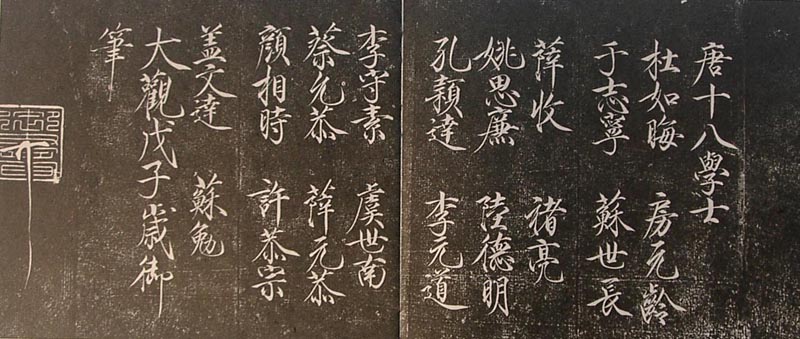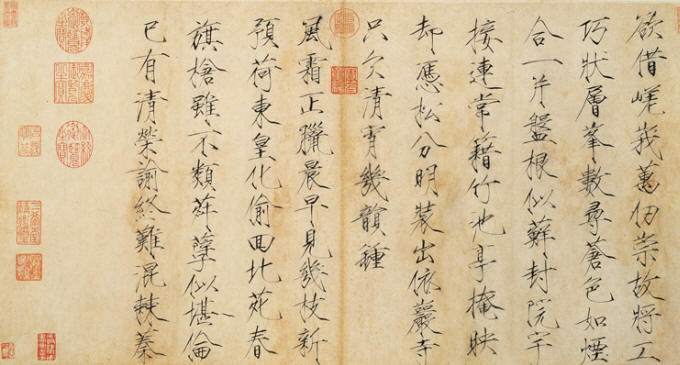Search
Main Styles of Chinese Calligraphy
Other Famous Chinese Calligraphers
Chinese Culture >> Chinese Art
Emperor Huizong: Chinese Calligrapher
Emperor Huizong (November 2, 1082 – June 4, 1135) was the eighth and one of the most famous emperors of the Song Dynasty of China, with a personal life spent amidst luxury, sophistication and art but ending in tragedy.

A true artist, Huizong neglected the army, and Song China became increasingly weak and at the mercy of foreign enemies. When the Jurchen of Manchuria founded the Jin Dynasty and attacked the Liao kingdom to the north of the Song empire, the Song court allied with the Jin and attacked the Liao from the south. This succeeded in destroying the Liao kingdom, a long time enemy of the Song. However, an enemy even more formidable, the Jin, was now on the northern border. Not content with the annexation of the Liao kingdom, and measuring rightly the weakness of the Song empire, the Jin soon declared war on their former ally, and by the beginning of 1126 they crossed the Yellow River and came in sight of Kaifeng, the capital of the Song empire. Stricken with panic, Huizong abdicated on January 18, 1126 in favor of his son who became Emperor Qinzong (欽宗).
Overcoming the walls of Kaifeng was a difficult undertaking for the Jin cavalry, and this, conjugated with fierce resistance from some Chinese officials who had not totally lost their temper like Huizong, resulted in the Jin raising the siege of Kaifeng and returning north. The Song empire, however, had to sign a humiliating treaty with the Jin, agreeing to pay a colossal war indemnity and to give a tribute to Jin every year.
But even such humiliating terms could not save the hopeless Song empire. Within a matter of months, the Jin were back south again, and this time they were determined to overcome the walls of Kaifeng. After a bitter siege, the Jin eventually entered Kaifeng on January 9, 1127, and many days of looting, rapes, and massacre followed. Huizong, his son Emperor Qinzong, as well as the entire imperial court and harem were captured by the Jin in the Jingkang Incident. One of the sons of Huizong managed to escape to Southern China where after many years of struggle he would establish the Southern Song Dynasty, of whom he was the first emperor, Emperor Gaozong (高宗).
Huizong and Qinzong were demoted to the rank of commoners by the Jin on March 20, 1127. Then on May 10, 1127, Huizong was deported to Northern Manchuria, where he spent the last 8 years of his life as a captive. The man who once had been the most powerful ruler on earth and had lived in opulence and art died a broken man in far-away Northern Manchuria in June 1135 at the age of 52.
Huizong was a great painter, poet, and calligrapher. He was also a player of the guqin (as exemplified by his famous painting 聽琴圖 Listening to the Qin); he also had a Wanqin Tang 『萬琴堂』 ("10,000 Qin Hall") in his palace. He invented the "Slender Gold" (瘦金體) style of calligraphy. The name "Slender Gold" came from the fact that Huizong's writing resembled gold filament, twisted and turned. His era name of Xuanhe is also used to describe a style of mounting paintings in scroll format. In this style, black borders are added between some of the silk planes.
Some of Huizong's Calligraphy Works


Special Advertisement
